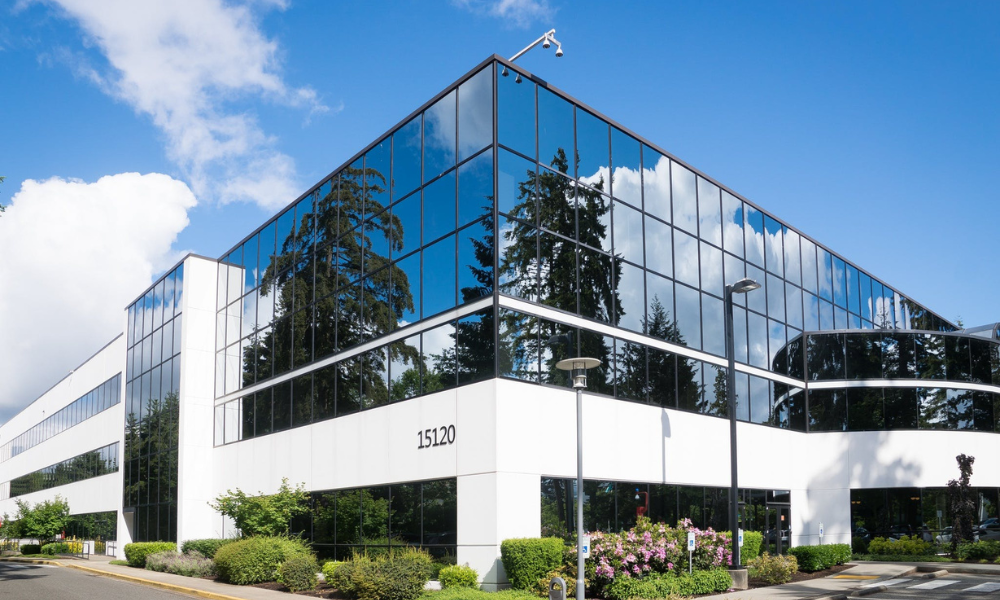CanFirst's Mark Braun on e-commerce boom and population growth propelling industrial demand to new heights, outpacing the real estate sector's challenges

This article was produced in partnership with CanFirst.
Warehouses are bucking the trend in the real estate sector's downturn by capitalizing on the growth in e-commerce and the population. The demand remains strong, particularly in industrial zones in major cities like Toronto and Montreal, where property prices are among the fastest-growing globally.
The multi-family and industrial segments in Canadian real estate have demonstrated remarkable growth, buoyed by factors such as population growth, limited supply, and the inherent ease of re-leasing properties.
Executive Vice-President of Investments at CanFirst, Mark Braun maintains that despite the challenges of increased interest rates, which have escalated the cost of commercial mortgages, and the surge in development expenses due to persistent inflation, industrial real estate in Canada has managed to sidestep the anticipated slowdown that many feared would impact the sector.
Although the pace of e-commerce growth has decelerated, the trend towards online sales continues to rise, albeit at a more measured pace, however population growth indicates a sustained demand for industrial real estate in the foreseeable future.
Common foundations: population growth, limited supply, and re-leasing ease
The backbone of both the multi-family and industrial real estate sectors has been the steady population growth Canada has witnessed over the past decade. This demographic trend has not only increased demand for housing but has also escalated the need for industrial spaces to support the growing consumer market.
Coupled with this is the challenge of increasing supply. Both sectors grapple with the scarcity of shovel-ready development land, especially in densely populated regions, where zoning and infrastructure constraints further exacerbate supply issues.
Braun says, “As the population expands, it necessitates a corresponding growth in warehousing to support the population. This support can come through direct warehousing, manufacturing, or other related industrial uses. Moreover, with the population's growth, there is a crucial need for an expanded industrial base.
“Additionally, there's the phenomenon of onshoring, where industries that had previously moved offshore are now returning. These factors collectively contribute to the increasing demand for industrial spaces, marking a significant transformation in how we approach industrial infrastructure.”
The ease of re-leasing is another shared strength. The multi-family sector benefits from static configurations that make apartments turnkey solutions for residents. Similarly, many industrial spaces, with their standard layouts, cater efficiently to the needs of various businesses, making them highly re-leasable.
Diverging paths: rent control and lease structures
A significant divergence between the two sectors is the presence of rent control in the multi-family sector across several provinces, which caps the annual rent increase landlords can impose. This contrasts sharply with the industrial sector, where no such controls exist. Here, lease terms, including rental rates, are negotiated freely between landlords and tenants, allowing for adjustments that reflect the current market dynamics. This flexibility has enabled industrial rental rates to outpace inflation significantly over the last five years.
“While the rise in apartment rents is widely recognized, the surge in industrial rent prices has flown under the radar, despite being similarly noteworthy. For instance, in Toronto, industrial rents were stable at $5 per square foot for two decades but have now escalated to $20 per square foot, marking a fourfold increase,” Braun says.
“This change is substantial. Presently, there are tenants with long-term leases originally set in the single-digit range who are facing renewals at rates between $15 and $25 per square foot, highlighting a considerable shift in the cost landscape for industrial spaces.”
The City of Toronto has recently increased property taxes by 10 percent, a move that reflects how inflation impacts municipal budgets. For multifamily landlords, this creates a direct challenge, where rent control may limit their ability to fully offset those costs or at a minimum, limit their ability to grow net rental income.
However, not all jurisdictions or situations may permit such rent adjustments. In contrast, for industrial properties, these cost increases can be directly passed through to tenants. Braun suggests that while the financial outcomes for multifamily and industrial properties may not always show a clear advantage year over year, industrial properties potentially offer a better inflation hedge. This is particularly true in scenarios where costs are escalating more rapidly than rents. This structural difference is key to understanding the financial dynamics at play.
The triple-net lease advantage
Industrial real estate distinguishes itself with the prevalence of triple-net leases. Braun explains, “A triple-net lease means all expenses, including operating costs, taxes, and insurance, are covered by the tenants.” This arrangement shifts the financial burden of these costs from landlords to tenants, a stark contrast to the multi-family sector where landlords absorb most these costs directly, if rent cannot grow ahead of expenses.
Simplifying property management
Property management in the industrial sector is significantly simpler and more cost-effective than in the multi-family sector. Braun notes the long-term nature of industrial leases especially for single-tenant facilities, which often opt to manage the property themselves, reduces the landlord's management burden. This streamlined approach to property management contrasts with the multi-family sector's challenges, such as higher turnover and strict eviction regulations.
While both the multi-family and industrial sectors share foundational strengths, the industrial sector's distinctive advantages underscore its appeal. As Braun aptly summarizes, the industrial sector's stability and the compelling dynamics of tenant negotiations and lease structures make it an attractive proposition for investors seeking to diversify their portfolios in the face of ongoing population growth and supply constraints.



